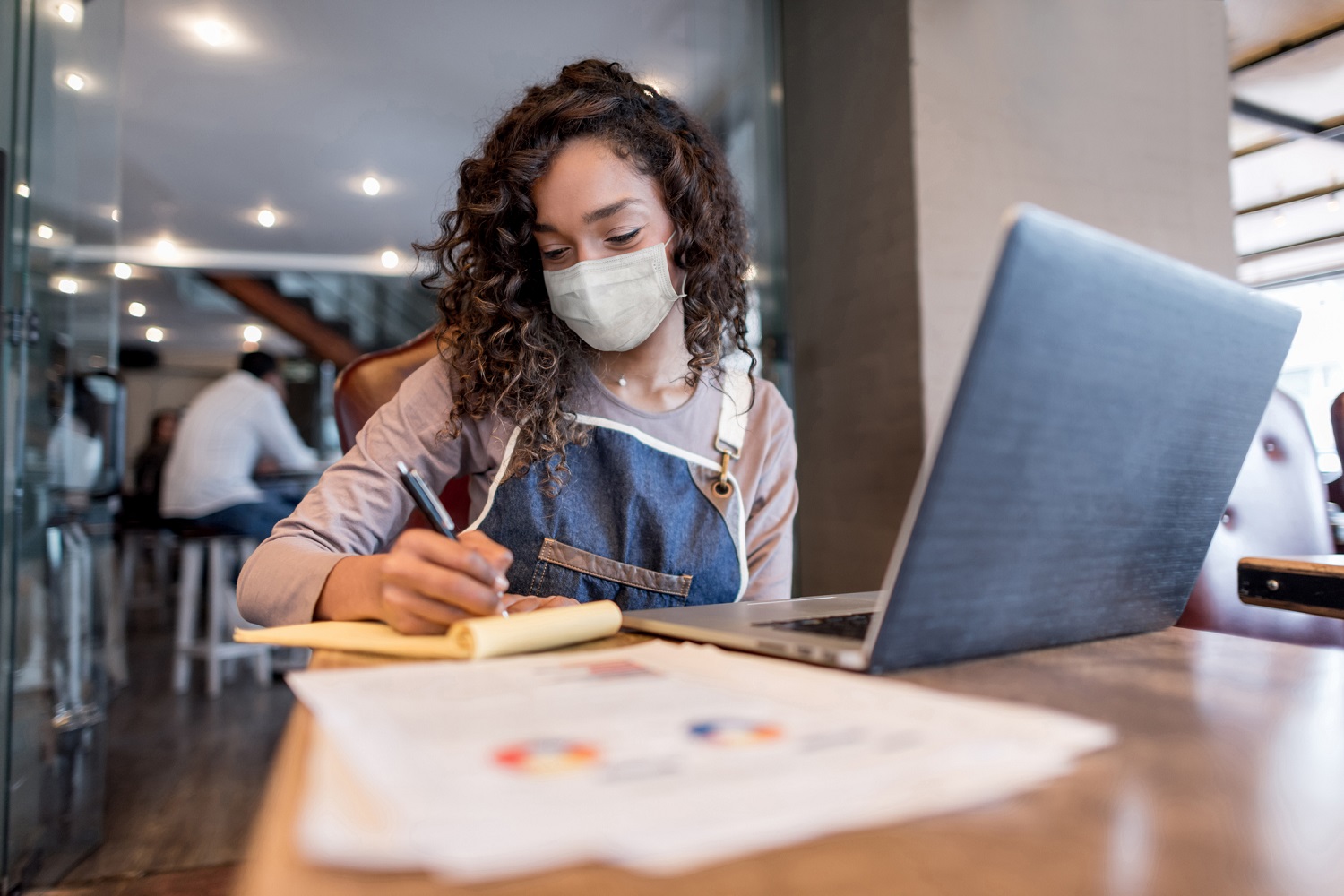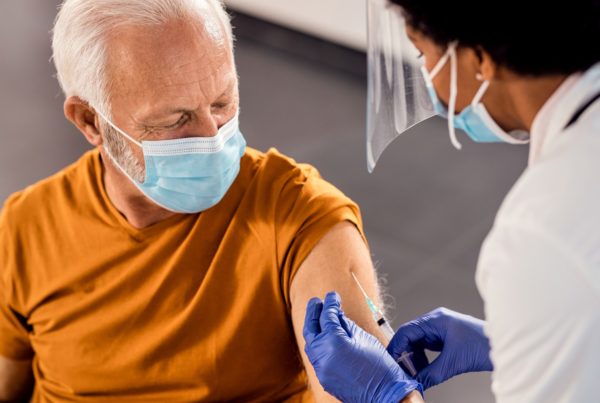
Canada is reopening and wearing a mask on public transit and in indoor public spaces has been made mandatory in some provinces.
At first, the World Health Organization (WHO), the Centers for Disease Control and Prevention (CDC) in the United States, the Public Health Agency of Canada and multiple provincial and territorial governments said that masks should not be worn in public. However, as community transmission increased, their discourse shifted. In May, it was suggested that we all wear masks when appropriate. As of July, the province of Québec, as well as certain parts of Ontario, declared masks mandatory in indoor public places.
Many individuals are now asking themselves: As recommendations keep on evolving throughout the pandemic, what has changed and why do I have to wear a mask? What are the benefits of wearing one when we go out in public and why is it now mandatory?
Is It Normal for Measures to Evolve?
COVID-19 was uncharted territory a few months ago. The scientific and medical communities were faced with a worldwide pandemic caused by a completely new and unknown virus and had to learn quickly how to protect the public.
This situation is complex, and recommendations are being re-evaluated as we learn more about the virus. Showing flexibility in our thinking is a good thing. Changing the guidelines will keep us safer, based on what we discover scientifically and know to be true. The recommendations must evolve to reflect the most current knowledge and scientific consensus.
As with anything new, there is a learning curve. We first thought that people without symptoms could rarely transmit the virus. This assumption was based on our experience with similar viruses. Slowly, we realized that this was not true, indeed those without any symptoms were capable of transmitting the virus. This reality means that even though someone is not coughing or sneezing they are able to infect others. We call this “asymptomatic transmission”.
An article from the University of Ulm in Germany looked at the percentage of estimated transmission by undiagnosed and presumably asymptomatic people as well as the number of cases showing none or only very mild symptoms. The estimated numbers varied from 42.5% to 79% from studies that looked at transmission in Italy and China. These findings mean that even if you think you are feeling well, you might carry the virus and be responsible for the infection of others. People with very mild symptoms might not even think they are infected and brush off their symptoms as just due to feeling run down or not sleeping well the night prior.
In the beginning of the pandemic, the recommendation was not to wear a mask, simply because we were not aware of the importance of asymptomatic and minimally symptomatic transmission. The strategy behind this messaging was also based on shortages of personal protective equipment. Health care workers needed to have access to them so they could protect their patients and themselves. As it was unclear at the time how serious the situation would become, it was felt that we should reserve masks for health care workers and those on the front lines.
Why Wear a Mask in Public Spaces?
Have you ever been to a hospital or walk-in clinic and seen a box with masks in it? The sign next to it would usually ask you to wear one if you are coughing or had any other typical respiratory symptoms. This safety measure is taken to reduce the chances that you will transmit the virus you are infected with to other people seeking treatment.
Because we know that infection occurs from liquid droplets expelled by breathing, talking, coughing, and sneezing when people are close to one another, this means that anyone can infect anyone else sometimes without even realizing it. Therefore, masks act as a physical barrier preventing droplets from reaching individuals next to you. In other words, you keep your germs, and viruses, to yourself.
As people are getting back to a more “regular” routine, it is more and more difficult to respect public health measures such as keeping a physical distance of two metres. If everyone wears a mask, your chances of inhaling droplets from an infected person that you get into close contact with are highly reduced. This safety measure becomes particularly important in indoor environments where we have come to learn that it is much easier to inhale someone else’s droplets. Outside, the droplets get carried away easily by the air. We must be particularly cautious indoors.
The German paper also found that the incidence of new cases was lower in countries where a very high percentage of people were wearing masks, contrary to others where it was not mandatory. In Hong Kong, where 96% of the population wear masks, the incidence was of 129 cases per million inhabitants in March. This means that 129 individuals contracted COVID-19 out of a million. In Italy, at the same time, and where masks were not worn, the number was as high as 2983 per million inhabitants.
However, wearing a mask is not just about statistics, it is also an act of solidarity to protect others.
Think about wearing a mask out of consideration for individuals who are not as healthy as you are. Some people live with cancer, diabetes, or with a compromised immune system. For them, simple activities such as going to the grocery store can be highly anxiety provoking if others are not wearing masks. There is safety in numbers and if all of us are masking-up, then we markedly reduce the ability of the virus to spread from person to person. Remember, this virus wants to spread. His agenda, as with any virus, is to infect us. We need to create conditions which will not allow it to do so.
Are All Masks Made Equal?
The answer is no.
A study conducted by Duke University tested 14 different types of masks. From the N95 worn by health care workers to neck fleece, bandanas, and homemade masks, they were able to visually see how many droplets could get out of all types of masks.
The N95 showed the best results, followed by surgical masks. N95 masks are only required by health care workers doing special procedures in the hospital setting on very sick patients. There is a global shortage of these special masks, so they are not for everyday use outside of the hospital. Homemade ones made from different types of cotton and blends also showed great outcomes and are what we should be wearing.
Knitted masks, bandanas and fleece ended up being the worst. In fact, the neck fleece even appeared to be counterproductive as it breaks up bigger droplets into smaller ones. This finding means that it spreads droplets more than if you were not wearing a mask at all.
As for masks with exhalation valves or vents, the WHO as well as the Government of Canada do not recommend wearing them. As much as it is tempting to buy one (they are made to breathe easier), they are ineffective in our battle against COVID-19 because they allow infectious respiratory droplets to be expelled outside the mask. Since we want to keep our droplets to ourselves, this type of mask does not reduce the spread of the virus.
Can I Stop Practising All Other Preventive Measures if I Wear a Mask?
It would be great if wearing a mask by itself was enough. Unfortunately, it’s not.
As already mentioned, droplets are responsible for spreading the virus and can be expelled while you speak, laugh, cough or sneeze. The mask helps you to protect others around you. But wearing one does not mean that you can get in close contact with others.
A mask reduces the chances that others will inhale your respiratory droplets; it does not eliminate the risk altogether. Some droplets can leak out the sides or through the mask itself. Wearing a mask AND staying six feet apart, especially indoors, will substantially reduce the risks.
Wearing a mask should not give you a false sense of security. As the purpose of masks is to add another layer of protection, they must be worn properly and combined with other public health measures. Keep maintaining physical distance of six feet from others, washing your hands and avoiding touching your face as you can contract the virus through contact with mucosal tissues (i.e., your eyes, nose, mouth, etc.).
To learn how to wear a mask and the dos and don’ts, read our other articles on face masks:
Sources:
- Considerations for Wearing Masks
- COVID-19: How much protection do face masks offer?
- Inexpensive way to test face mask effectiveness in reducing COVID-19 transmission (Video)
- Low-cost measurement of facemask efficacy for filtering expelled droplets during speech
- Masked Education? The benefits and burdens of wearing face masks in schools during the current Corona pandemic
- Non-medical masks and face coverings
- Use of non-medical cloth masks or face coverings in community settings



